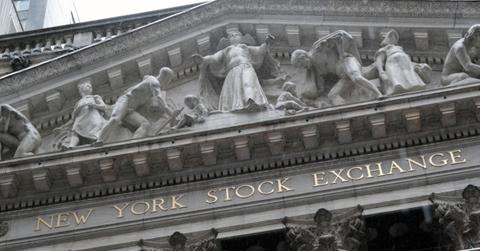Should You Buy Before or After a Reverse Stock Split?
Reverse stock splits decrease a company's number of outstanding shares, and are often done to avoid delisting. When is a good time for investors to buy?
May 26 2021, Published 1:32 p.m. ET

At certain points in a company’s lifetime, the board of directors might decide to engineer a stock split or its opposite, a reverse stock split. A company's market capitalization doesn't change after either type of stock split. Only the number of outstanding shares is adjusted.
A stock split is when a company decides to increase its number of outstanding shares available. It’s often done to increase the liquidity of the stock. Not surprisingly, a reverse stock split flips this equation around and the company decreases the number of outstanding shares. Investors should be aware of the potential impacts of a reverse stock split.
Reverse stock split, explained
When a publicly traded company undergoes a reverse stock split, the company cancels outstanding stock and issues new shares to existing shareholders. Existing shareholders receive the same value in stocks, but the number of shares changes based on the reverse stock split ratio.

For example, in a 1-for-10 reverse split (1:10), shareholders’ total shares would be divided by 10. If you owned 1,000 shares of a company, after a 1:10 split you would then own 100 shares, but the dollar value would remain unchanged.
A company’s market capitalization doesn’t change after a stock split or a reverse split. Only the equation of shares times price changes. For dividend stocks, the future dividend amounts would adjust proportionately according to the reverse split.
Why companies pursue reverse stock splits
The main reason most companies perform a reverse stock split is to avoid being delisted from a major exchange. For example, the NYSE will start the delisting process for a stock trading below $1 for 30 consecutive trading days. By engineering a reverse split, the company’s share price would multiply, which would enable it to stay listed.
Other reasons for a reverse stock split include an attempt to boost company image after a sudden price drop or when the company has made major improvements. A reverse split can also attract attention from analysts or institutional investors.
Is it better to buy stock before or after a reverse split?
As far as the market value of stocks goes, it doesn’t make much difference whether you buy before or after a reverse split. The number of shares will differ, but the value of shares remains the same immediately after a reverse split.

However, it’s generally accepted that a reverse stock split is more of a red flag than a positive sign for the company’s trajectory. Reverse splits can signal company distress. Even if the split itself is neutral, it can often follow a negative event or a drastic share price drop.
In 2008, NerdWallet reported that a study “suggests the market tends to underestimate how poorly companies will perform post-split.” It depends on other factors, but a reverse stock split might cause investors to consider selling in case the stock performs badly in the coming years.
The ideal timing to buy a stock that’s undergoing a reverse split depends on your investment goals. Sometimes a reverse split can be a part of positive changes—for example, Citigroup’s 2011 reverse stock split.
